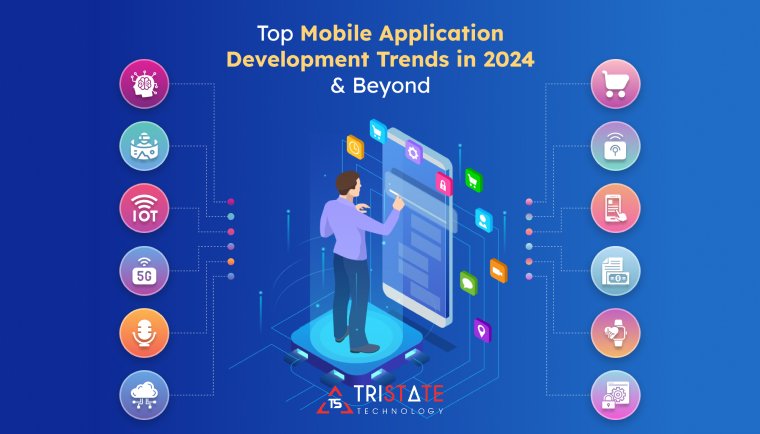In 2024, mobile apps will become even more intelligent and connected. Key drivers include advanced AI/ML features, the maturing of 5G networks, and exploding IoT ecosystems. Industry analysts note that AI and machine learning are revolutionizing mobile experience. For example, apps now offer smarter voice assistants, predictive text, and image/video analysis in real time.
Augmented reality (AR) and VR technologies are also gaining traction in mobile apps. Development kits like Apple’s ARKit and Google’s ARCore allow rich AR experiences on smartphones. The global AR/VR market is forecasted to grow from $22.12 billion in 2024 to $96.32 billion by 2029, indicating strong demand across gaming, retail, healthcare, and other sectors. Expect mobile developers to integrate AR for navigation, shopping, and immersive marketing.
Key Trends:
- 5G and Network Tech: 5G becomes ubiquitous, enabling seamless high-definition streaming, VR/AR, and massive IoT connectivity. Apps leverage bandwidth for features like real-time collaboration and cloud gaming. Edge computing (processing on the device or nearby server) reduces latency for critical apps.
- AI/ML-Driven Features: On-device AI (using frameworks like Core ML or TensorFlow Lite) personalizes content. Voice and image recognition, augmented reality filters, and adaptive UIs are common. Developers are also using AI tools to generate code snippets and UX, reflecting a broader shift toward AI-assisted development.
- IoT and Wearables: Mobile apps increasingly integrate with wearables (smartwatches, fitness trackers) and smart devices. Companion apps for home automation and health monitoring proliferate. With billions of IoT devices online, smartphones act as hubs, collecting and displaying sensor data.
- Security and Privacy: Strengthened by regulation, mobile security is reinforced. End-to-end encryption, hardware-backed security modules, and strict permissions models protect data. GDPR and similar laws drive a privacy-by-design approach.
- Cross-Platform Frameworks: This remains important. In 2024, frameworks like Flutter and Kotlin Multiplatform continue to evolve, allowing single-codebase deployment across devices (phones, tablets, even IoT front-ends).
In summary, 2024’s mobile apps will be faster, smarter, and more connected. Embracing 5G, leveraging AI/ML for personalization, and integrating with the vast IoT ecosystem will be critical. European businesses should design apps now for this next wave of technology-driven mobile experiences.


